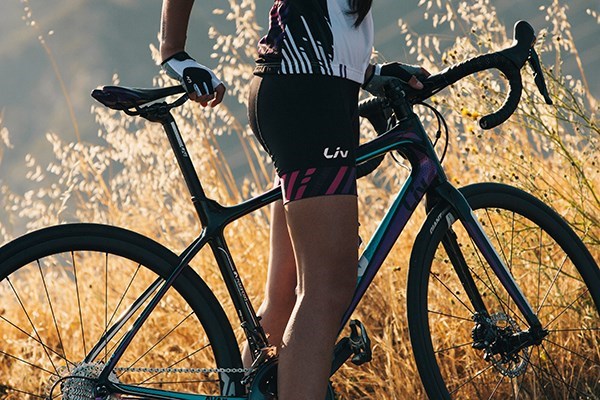How to choose the right saddle for you
Choosing the right bike saddle is essential to comfort and overall enjoyment of your ride. While many bike components are unisex in nature, a saddle is definitely not. A women's saddle is built to offer the best support for your sit bones (ischial tuberosites) and pelvic anatomy. Use this women's saddle guide to learn why a specific saddle is a great choice for you, how to measure your sit bones and the style of saddle you need.
How will a women's saddle improve my comfort?
On average, women have wider sit bones than men (about 1cm on average). These are the bones you use to sit on. Women prefer to saddle further back on the saddle to reduce pressure, so women's specific saddles will tend to be a little wider at the rear and shorter at the front than a unisex saddle.
How to measure your sit bones
Finding your correct sit bone width is easy, and you can do it at home.
All you need is a flat bench or seat, something to rest your feet on, a piece of cardboard, some chalk and a tape measure. Check out our video to see what you need to do.
Choose the right saddle style for you
Combine your optimal saddle width above with the table below to find the right saddle for the type of riding you'll be doing.
Hybrid & Mountain Bike
Add an extra 20mm to your optimum saddle width when riding a hybrid bike. This will offer more support and comfort when riding in a stable upright riding position.
Endurance Road
Add an extra 10mm to your optimum saddle width when riding long distances on your road bike. This offers a great compromise between weight and comfort.
Road Race
Add no extra distance to your optimum saddle width when performance is everything. Added width isn’t needed as you’ll be putting more pressure near the front of the saddle.
What to look for in a good women's saddle
Cover:
No seams or design elements that can rub against your thighs and chafe
Padding:
Gel saddles seem like a good idea, and they are for hybrid bikes and short rides. However, gel can be distorted and lose its support in those crucial areas. A saddle with firm padding (such as leather) takes a little time to break in but will offer greater comfort in the long run – essential if you're going to ride a lot.
Grooves & cut outs:
A key difference between men's and women's saddles is the design of the central groove or cut out. These features reduce saddle discomfort by relieving pressure on your soft tissue and they are often deeper and wider than grooves found on men's saddles.
Rails:
If you're performance minded then rails are a consideration. These are the bars under the saddle that the seatpost clamps to. Most standard rails are made from aluminium or steel, but premium saddles will come with ultra-lightweight carbon composite or titanium rails.

Common saddle problems and how to fix them
Pressure on your sit bones
A saddle which is too high can take some of your weight off the pedals so more pressure is placed on your sit bones. This makes your hips rock side to side and your thighs will chafe against the edges of your saddle.
Use an Allen key to adjust your seatpost height. Make micro adjustments until your foot is on the pedal with a slight bend in your knee. You should not be able to touch the floor with both feet whilst in the saddle.
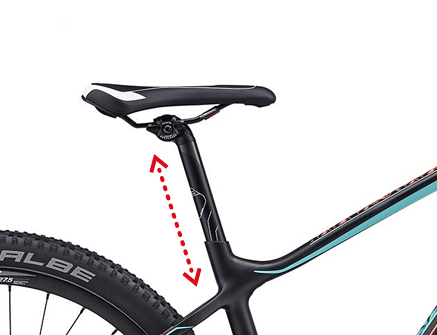
Difficulty maintaining efficiency
How far forward or backward (fore/aft) your saddle is will make a big difference to your comfort and efficiency when cycling. Too far forward and you'll put more strain on your upper body when gripping the handlebars, particularly your shoulders and hands. Too far back and you'll find it harder to climb and make it difficult to maintain a fast pedalling speed (cadence).
The easiest way to find the right saddle position for you is to position your pedals at 3 o'clock and 9 o'clock. Get a friend to hold a plumb bob (or weighted piece of string) from your leading knee. The line should pass through the pedal axle.
If the line falls in front of the saddle, move it backwards. If the line is behind then move the saddle forward.
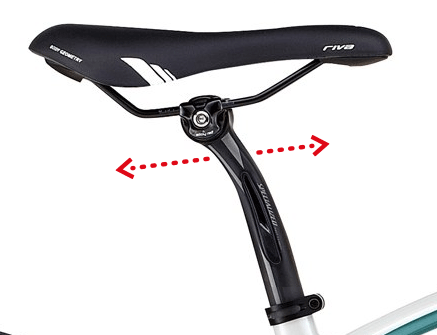
Neck and lower back pain
Over extending to reach the handlebars can cause neck and lower back strain. It also puts a lot of pressure on the front of the saddle. A great way to solve this is by fitting a shorter stem (the small bar that your handlebars fit into). This moves the handlebars closer to you so you don't have to reach so far.
Also you could consider getting shallow drop handlebars (on road bikes) or flat handlebars that swoop backwards to reduce reach further.
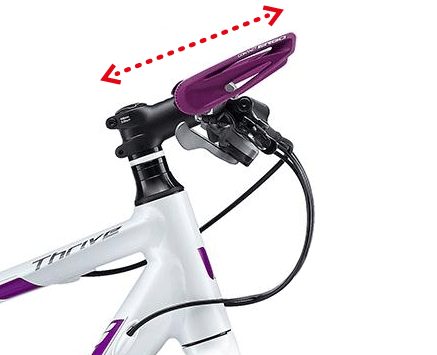
Why saddle angle is important
Once you've bought your new saddle, getting the right angle is critical for enjoyment. A poorly angled saddle can damage soft tissue – not something you want.
Saddle tilted down
You'll put more pressure on your wrists and forearms (as your weight is shifted forwards). As you slide forward you also put more pressure on the pedals causing knee pain.
Sitting on the narrow nose of a saddle really builds up pressure in your soft tissue.
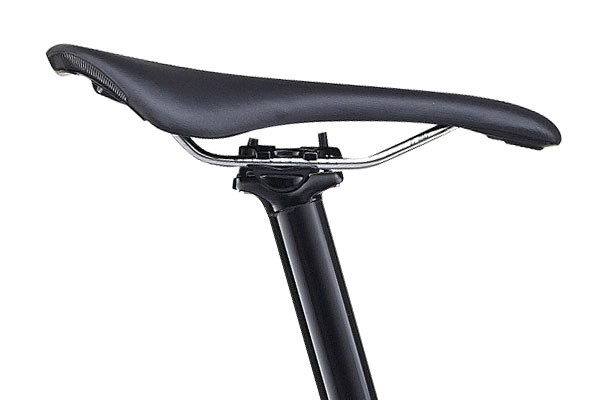
Saddle tilted up
You'll experience lower back pain, and maybe strain in the neck.
Your pelvis is angled backwards which puts greater pressure onto your lower back, not helped by the fact you'll be overstretching to reach the bars.
How to adjust your saddle
Your saddle should be neutral so that your sitting on the middle and not sliding forward or backward. Grab hold of a spirit level. Now use a 5mm allen key to loosen the clamps at the top of your seat post. Keep tweaking the angle until the spirit level is level.
If you find that the neutral position is not as comfortable as you would like, you can make small incremental changes until you find the best position for you.
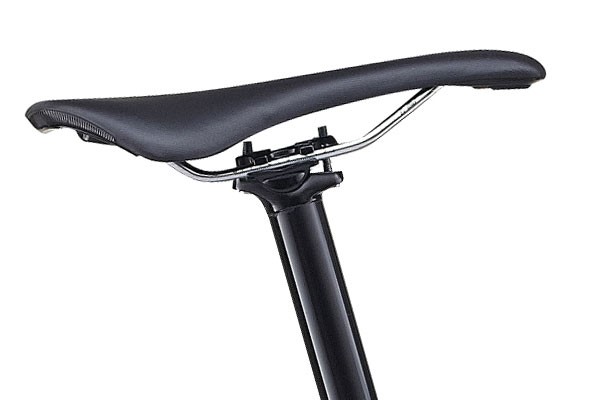
Most Popular Women's Saddles
Frequently Asked Questions
Everyone is different, a saddle is a personal choice, please see our guide for more info.
Several factors need to be considered, please read our guide here for more.
Generally, women have wider sit bones than men. Women's saddles tend to be wider at the rear and shorter at the front.
Adjusting the saddle height, angle and horizontal position will help prevent any pain.
To get the best fit, measuring the width of your sit bones will help find the most comfortable saddle.
Measuring the width of your sit bones will help you find the correct saddle width.

